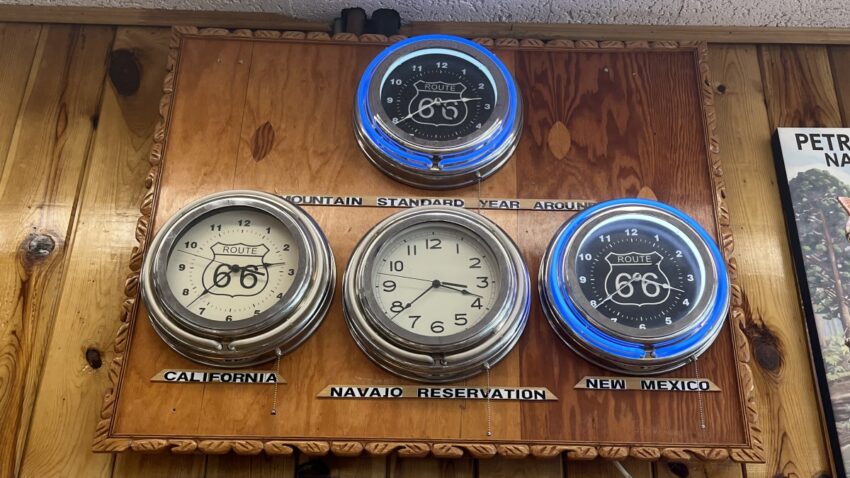If you’re a regular reader of broadcasting industry forums and social media groups, you’ve probably rolled your eyes already.
Nerding out about hourly legal identification announcements is one of the geekiest things we broadcasting fans like to do. But for as often as the subject comes up, there still seems to be a lot that most people don’t realize about legal ID’s.
Here are some interesting facts culled from the official federal code: 47 CFR § 73.1201.
You can insert extra stuff between the callsign and community of license.
Most people know that a legal ID is supposed to be the callsign followed by the community of license (and then any other communities that the station chooses to list). But these other things can also be inserted between the callsign and community of license:
- Frequency or channel number
- Licensee name
- Network affiliation
However, you can’t insert other things. Putting “broadcasting from the heart of beautiful downtown…” between the callsign and community of license might sound nice to the Chamber of Commerce, but it invalidates your attempt to comply with federal regulations.
What’s the exact channel number?
TV stations that choose to use a channel number as part of their legal ID must include the full virtual channel number, such as “2.1” rather than just “2”. There are a whole bunch more obscure notes for TV stations that are simulcasting another station on a subchannel; see the full code for those.
Channel or frequency must be included for satellite stations.
In my general observation as a nerd who listens to plenty of legal ID’s, this is one of the most forgotten-about parts of the code. Specifically, it says:
(3) Satellite operation. When programming of a broadcast station is rebroadcast simultaneously over the facilities of a satellite station, the originating station may make identification announcements for the satellite station for periods of such simultaneous operation.
(i) In the case of a television broadcast station, such announcements, in addition to the information required by paragraph (b)(1) of this section, shall include the number of the channel on which each station is operating.
(ii) In the case of aural broadcast stations, such announcements, in addition to the information required by paragraph (b)(1) of this section, shall include the frequency on which each station is operating.
47 CFR § 73.1201 – Station identification.
While I am not an attorney, it would appear that this section is saying that radio stations which simulcast their programming on multiple full-power stations must list the frequency of each one of those stations. Many do not.
(Translators are not considered “satellite stations” and have less-stringent ID requirements.)
There’s no exact timeframe on when it’s supposed to run.
Many people are taught that the ID has to run within a certain number of minutes of the top of the hour. While this may be policy at some stations, the actual federal code is much more vague:
Hourly, as close to the hour as feasible, at a natural break in program offerings.
47 CFR § 73.1201 – Station identification.
What is “feasible?” What is “a natural break in program offerings?”
Stations have interpreted this in all kinds of ways. Some bury their legal ID in a commercial break and then run other imaging near the top of the hour. Others run it at exactly 59:50 going into a network newscast. A few others that run network news put the ID after the news. I’ve even heard a few routinely run the ID near the bottom of the hour. (Maybe their automation was just way off.)
The FCC does actually enforce the rule from time to time.
While often dismissed as an unnecessary formality that only nerds care about, the FCC does actually pay attention to legal ID’s once in a blue moon. Back in 2013 it sent a Notice of Violation to KBIG-FM (Los Angeles).
“The monitoring revealed that the transmission failed to identify the station properly by announcing the station’s call letters immediately followed by its community of license. The station simply identified itself as 104.3 FM.”
FCC Notice of Violation, February 27, 2013
There’s still a special provision for expanded band AM stations.
Remember the expansion of the AM band? Probably not. Back in the early 1990s, some AM stations were granted new frequencies between 1620 and 1700 and were supposed to turn off the old frequency five years after the new one signed on. However, some kept both frequencies on the air and the issue was forgotten amid loosening ownership rules. A special section added back in 1991, which says that stations simulcasting in the expanded band can include the legal ID for both stations, is still part of the official code. However, it appears all of them are now carrying separate programming.
Say whatever you want before or after the actual ID.
There’s no rule on what you can or can’t say before or after the core part of the legal ID. There’s an old myth about a station in Utah named KRPN that supposedly gave its legal ID as “W KRPN Salt Lake City,” mimicking the TV show “WKRP in Cincinnati.” However, there’s a flaw in the myth: KRPN (now KMRI) was actually licensed to West Valley City.
You don’t have to actually provide a city-grade signal to a city to include it after your community of license. If you want to add New York, Los Angeles, and Chicago onto the end of your ID, go nuts.

